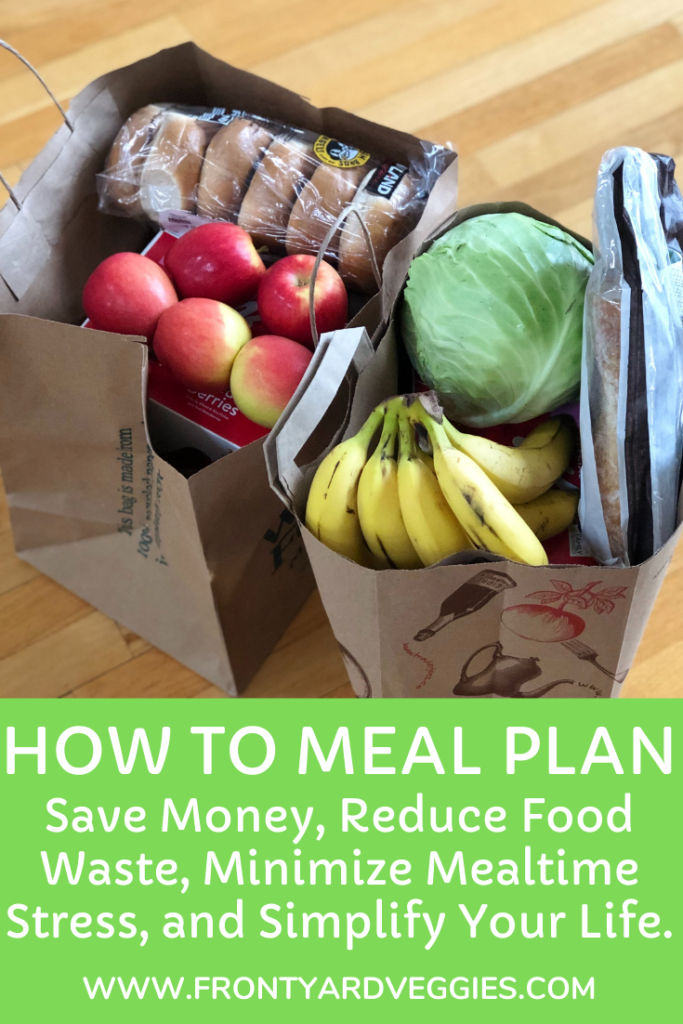
This is a post that I’ve been hemming and hawing about because to me, it seems almost too simplistic to warrant a post. But I realized it might be helpful for some folks so here we are! I’m going to walk through how to meal plan, sharing exactly how I do it each week (and have for years), and structuring grocery shopping based on said meal plan. I’ll likely expand on this down the road and will update this page with more information as meal planning is something I feel so strongly about for a variety of reasons:
- Minimizing food waste
- Saving money
- Maximizing your health
- Reducing mealtime stress
Why Should I Meal Plan?
You know when you get to the end of the day, exhausted and ravenous, and start scratching your head over what to make for dinner? Maybe you look in the cabinet and see all the ingredients but have zero desire or inspiration to make anything. Then you make a snap decision to order a pizza, or Thai food, or sushi, just this once, and tomorrow will be different. But tomorrow comes and it’s the same old story. Then at the end of the month you look at how much you spent on take out, delivery, and restaurants and are floored at the number. You know it’s better for your wallet, your waistline, and your sanity to make dinner at home but it can be so overwhelming. Read on, because it does NOT have to be!
But I Have No Time to Meal Plan!
If you’re thinking of dinner in terms of an elaborate dish prepared with oodles of ingredients and steps required, then no wonder you don’t want to do that at the end of a long day. Embody the age old adage, KISS -- Keep It Simple, Stupid (I prefer Silly!). Most days of the week, we do simple meals for dinner.
For simple dinners, I love a grain bowl! It’s like a fun little mix and match game where you can keep things interesting and delicious while also keeping them extremely simple.
- Base: Rice, quinoa, wild rice, or cauliflower rice.
- Veggies: sauteed greens, potatoes to roast, avocado, carrots, cabbage, anything that needs harvesting from the garden, frozen veggies to steam, etc.
- Protein: Vegetarian meat, steak, tofu, tempeh, eggs, rotisserie chicken, beans, lentils, fish.
- Sauce: Bring it all together with a yummy sauce! I love a cashew cheese, pesto, peanut sauce, sriracha mayo, tahini, whatever you want.
Voila! Easy, delicious, and good for the bank account. We do grain bowls 2-4 times a week depending on how busy things are around the house.
My Lifesaving Tip for Online Recipe Organization
Before going any further with how to meal plan, I want to share something that has truly revolutionized my online recipe game. Yes, we all probably have heaps of recipes saved on Pinterest and Instagram, but I don’t know about you, but I hardly ever remember to go back and look through them. The visuals overwhelm me! If you are familiar with the app Evernote, there is a great Chrome extension called Evernote Web Clipper that allows you to highlight a section of a website (aka the recipe), click the extension button to save the recipe to Evernote, along with allowing you to add tags, send it to a particular notebook, and make notes. Then, you can simply search through your recipes notebook in Evernote for whatever you’re looking for, like so:
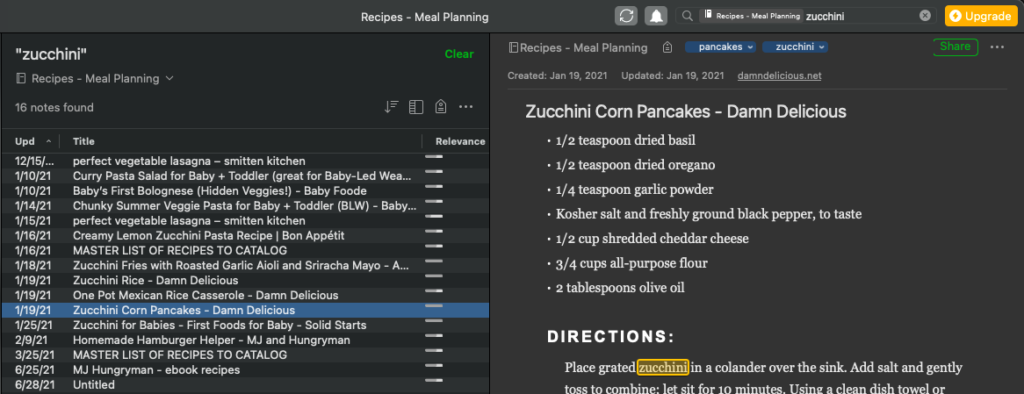
Then you can simply search your Meal Planning notebook for "zucchini" or "pasta" or whatever you're looking for and BAM, recipes with those ingredients pop up. I've found this much more useful than Pinterest in terms of actually using the recipes -- Pinterest is great for discovery, but once you've discovered a recipe you want to try, save it to your Evernote.
How to Meal Plan - Step by Step
Step 1: Scope Out Your Pantry and Fridge
Right now in our kitchen we have a plethora of quinoa, a half a head of red cabbage, soaked and cooked chickpeas, dried black beans, veggie burgers, a ton of kale and swiss chard from the garden, zucchinis from the garden, lentils, a head of cauliflower, some Beyond Meat bratwurst in the freezer, stir fry veggies in the freezer, and a few other random items. I’m trying to clean out the chest freezer to prep for some summer produce storage so I want to make a dent in the current stash. I like to plan around anything that will go bad if it’s not eaten -- I haaaaate food waste! That’s another way to maximize your grocery budget while making sure that no food goes to waste.
Step 2: Find Recipes That Include What You Already Have
Based on the contents of our semi-barren kitchen, I know that I want to use some of the stuff we have right now. For the rest of the week our meal plan will look something like this:
- Monday: sauteed Swiss chard and zucchini from the garden, quinoa, vegan sausage, cashew cream
- Tuesday night: Chana masala with rice
- Wednesday: leftover chana masala, with roasted sweet potato cubes added in to bulk it up a little bit.
- Thursday: gain bowl with quinoa, roasted cauliflower, lentils, roasted kale, and a Beyond Meat bratwurst.
- Friday: pizza night!
- Saturday: veggie burgers and sweet potato fries on the grill
- Sunday: veggie burgers and corn and zucchini on the grill
Step 3: Make a Shopping List With Exact Quantities
This one is pretty key, and easy to do since you’ve already pulled up the recipes you’ll be using. If you have two meals that call for one onion each, jot down “onions (2)” on your shopping list. That way, you won’t be stuck with extra onions that go rancid because you inevitably forget to use them! Same with fruit for snacks, heads of greens, anything that can go bad. You’re saving food from the landfill and also saving money — no more dollars wasted on rotten food! Hooray!
It might seem overwhelming at first. As you can see, we don’t do leftovers all that much right now, but with cooler weather coming this fall I’ll be making lots more soups and stews…and that stuff is leftover gold, people! Cook once, eat twice should be your motto if you’re new to meal planning.
I jot our meal plans down in my weekly bullet journal pages so I can easily flip back and see what we’ve been having the past few months. After getting a couple weeks of this under your belt you’ll be a meal planning pro, I promise!
Some examples from the past few months:
- Monday: oyster mushroom tacos
- Tuesday: grain bowls w/ cauliflower, sweet potatoes, Field Roast sausage, and quinoa
- Wednesday: lentil tacos
- Thursday: roasted brussels sprouts and coconut sticky rice
- Friday: pizza night
- Saturday: pasta with leftover pizza sauce
- lunches for the week: shredded kale and brussels sprouts salad base with edamame, sweet potatoes, chickpeas, and Beyond Meat chicken strips.
- Sunday: garlic mac and cheese with roasted brussels sprouts
- Monday: sesame slaw with garlicky seitan
- Tuesday: baked sweet potatoes with caramelized onions + black beans
- Wednesday: chana masala
- Thursday: chana masala leftovers
- Friday: pizza night
- Saturday: baked sweet potatoes with edamame and tahini drizzle
- Sunday: meaty beany chili (leftovers for Monday night)
The more you go through these steps, the easier it gets. Once you learn how to meal plan, you'll eventually have a huge backlog of weekly plans to flip back to and pull ideas from. Eventually it'll become second nature and you'll wonder how you ever did things before. And hopefully you'll also notice some great savings from all the nights of takeout and delivery you were doing. If you have any meal planning tips or tricks of your own, share them in the comments!

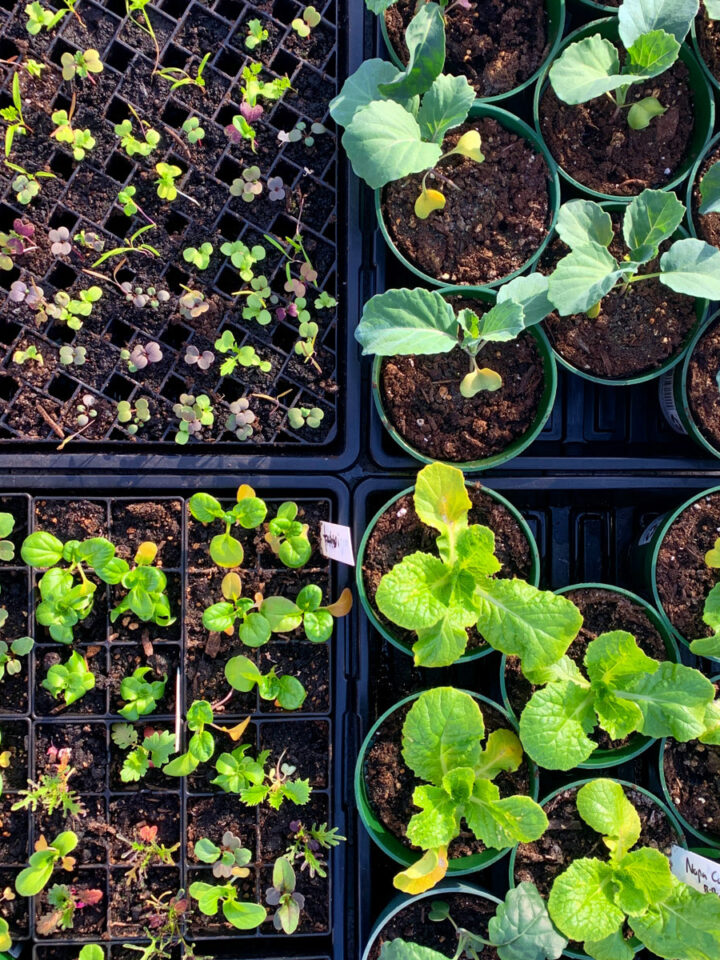
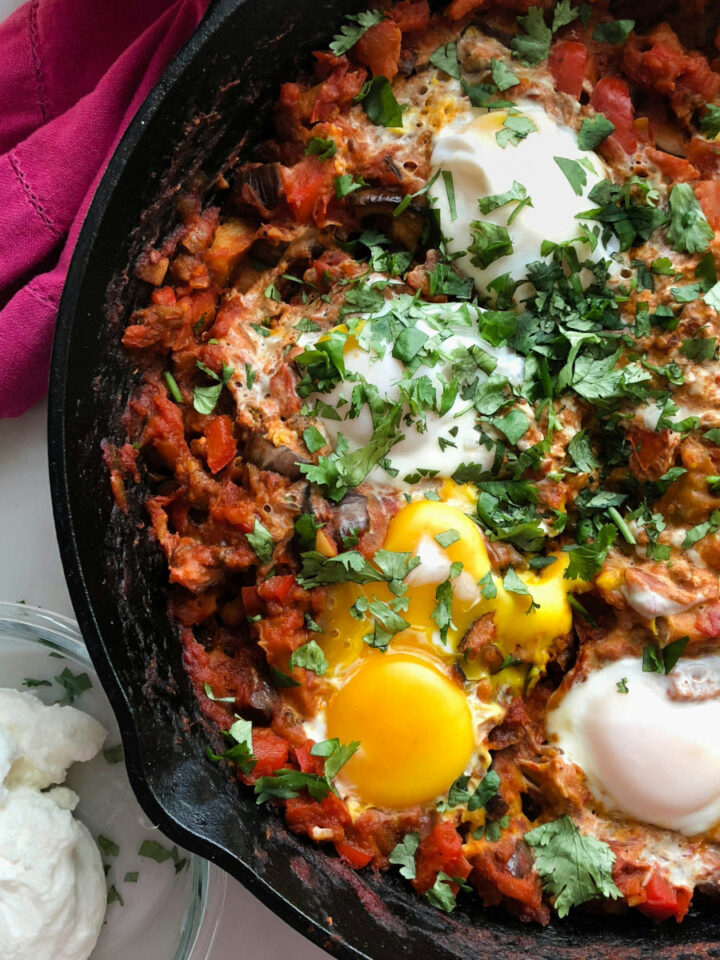
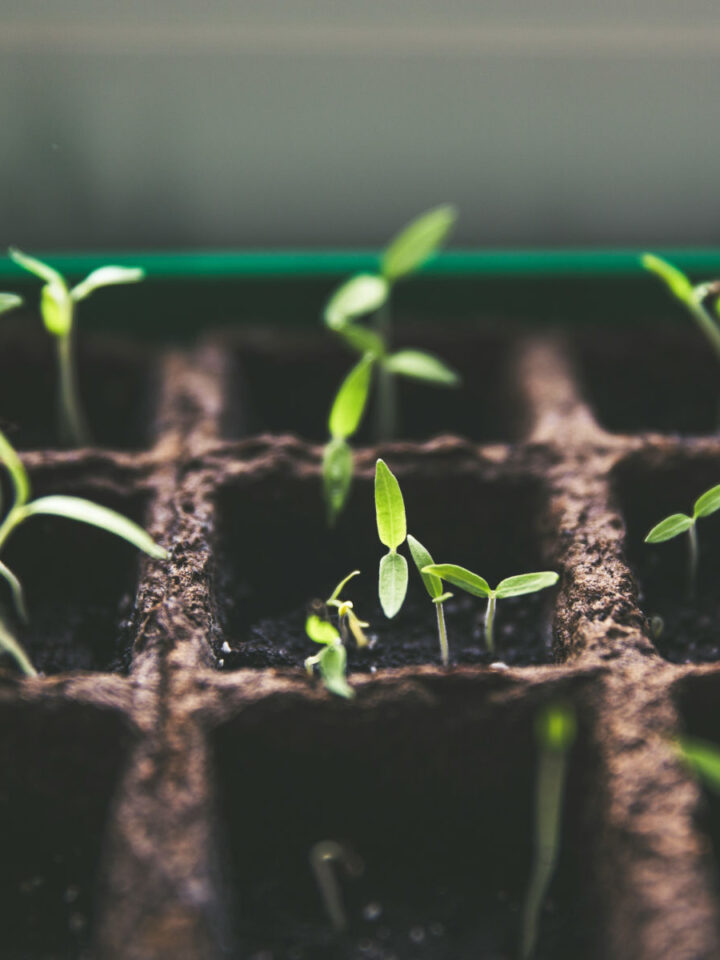
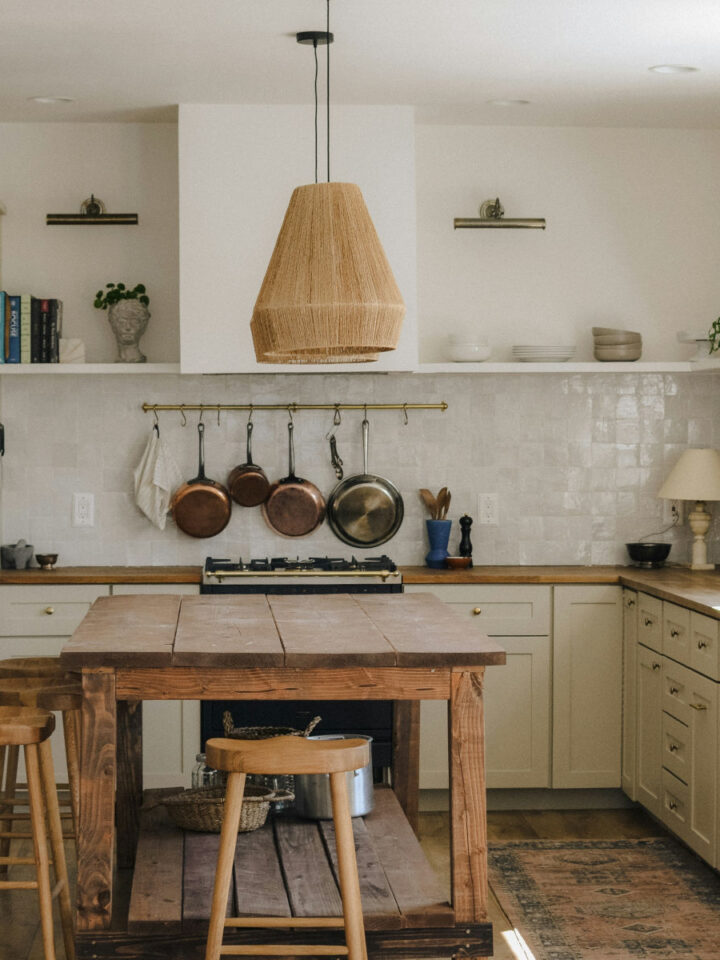
Leave a Reply